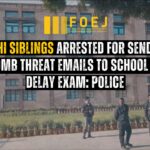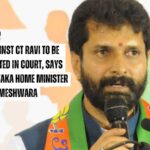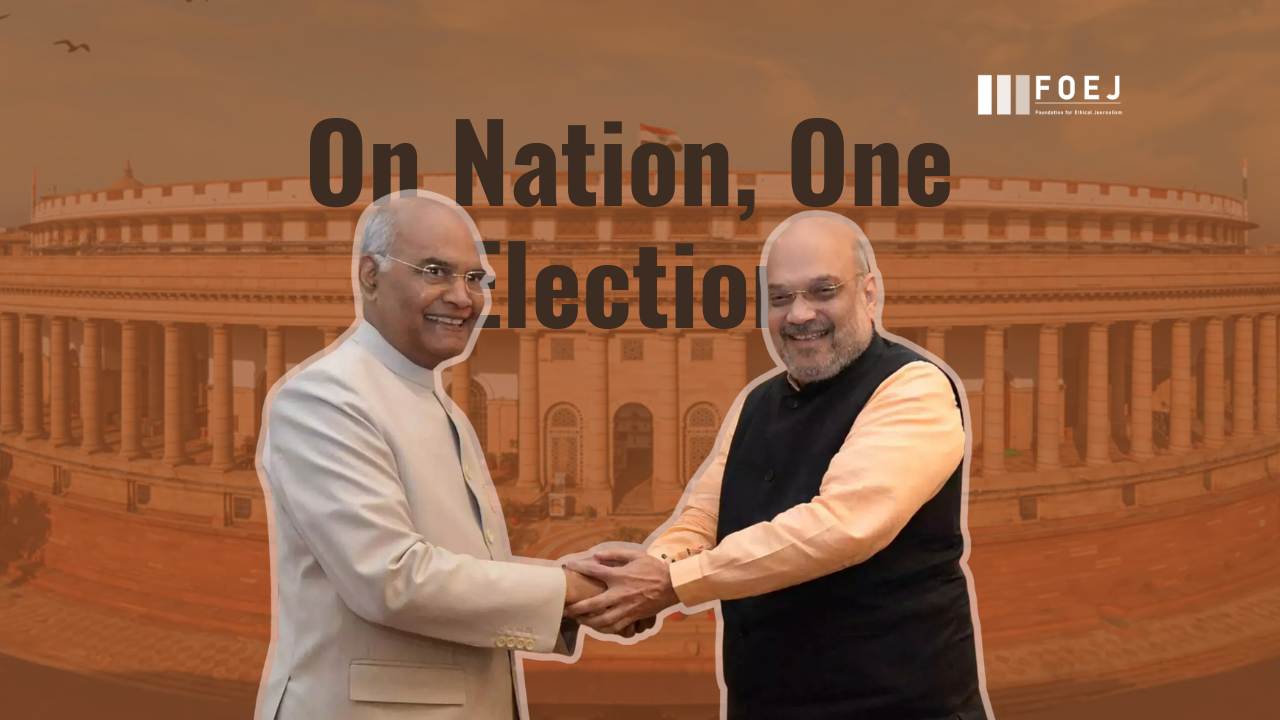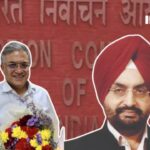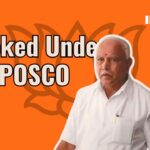The high-level committee on concurrent elections, chaired by Ram Nath Kovind, convened on Thursday at Rashtrapati Bhavan and submitted its findings on ‘One Nation, One Election’ to President Droupadi Murmu, according to the news agency ANI.
According to the news agency ANI, the high-level committee on concurrent elections, chaired by Ram Nath Kovind, met on Thursday at Rashtrapati Bhavan and presented its report on “One Nation, One Election” to President Droupadi Murmu.
The 18,626-page report was submitted during the conference. Home Minister Amit Shah was also present at the Rashtrapati Bhavan event when Kovind’s panel delivered the detailed report.
According to reports from the news agency PTI, Kovind suggested holding simultaneous polls for the Lok Sabha and state assemblies first and then conducting local body elections within a 100-day period.
The report submission took place 191 days after the panel was established on September 2, 2023. The plan also places a strong emphasis on creating a single electoral roll for the Lok Sabha, local bodies, and the Lok Sabha.
What is One Nation, One Election?
One Nation, One Election revolves around the idea of conducting simultaneous elections throughout the country. The elections will take place at the same time for both the Lok Sabha and state assemblies, thus focusing on concurrent voting.
In 1952, India implemented this concept, and it was later implemented in 1957, 1962, and 1967. However, they were halted when some state assemblies and the Lok Sabha were dissolved before their conclusion.
The BJP has continuously emphasized the concept of one nation, one poll, claiming that it would save time and finances for the country. Their 2014 Lok Sabha election manifesto read: “The BJP will seek, through consultation with other parties, to evolve a method of holding Assembly and Lok Sabha elections simultaneously. Apart from reducing election expenses for both political parties and the government, this will ensure a certain level of stability for state governments. We will also look at revising expenditure limits realistically.”
The Election Commission of India has also supported the idea, expressing its stance on various occasions, including a 2022 meeting with the 22nd Law Commission. Law commissions, including the 107th report in 1999 and the 22nd Law Commission in 2018, have advocated for simultaneous polls. Supporters say that conducting multiple elections strains state resources, keeps political parties in a perpetual campaign mode, and leads to corrupt practices. Critics, however, express concerns about the potential misuse of power by the Center, influencing regional parties, and state politics.
Those in support say that it will help the nation achieve financial stability over elections since only one election will be conducted. In addition, they argue that multiple elections pressure state resources, keep parties in a constant campaign mode, say more and work less, and lead to corruption.
However, the critics opposing it say that it will result in dominance and a power shift to a single party that rules the center, and they fear dominance of national issues over local issues.
For simultaneous elections to come into place, five articles in the constitution will have to be changed. Amending crucial articles such as 83, 85(2)(B), 174(2)(B), 356, and 75(3), as well as modifying the Representation of People’s Act, 1951, presents considerable hurdles. It will also need ratification from at least half of the Indian states and two-thirds of the majority in parliament.
Implementing simultaneous elections necessitates constitutional amendments, securing a two-thirds majority in Parliament, and gaining ratification from at least half of the states. Amending crucial articles such as 83, 85(2)(B), 174(2)(B), 356, and 75(3), as well as modifying the Representation of People’s Act, 1951, presents considerable hurdles.
Additionally, ensuring an adequate supply of electronic voting machines (EVMs), polling stations, and security personnel further complicates the process.”


